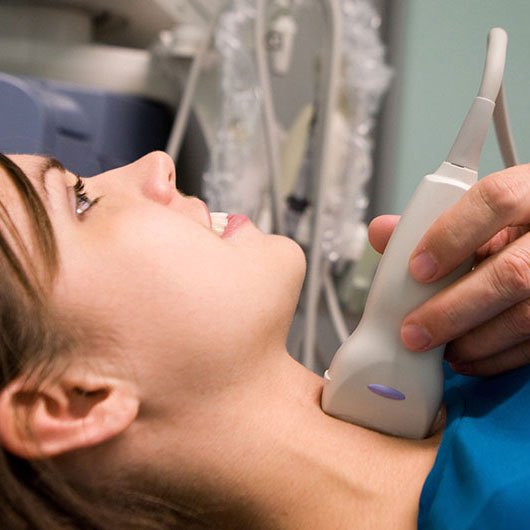As the field of sonography stands at the crossroads of technological innovation and human expertise, the debate surrounding automation’s role grows more intense. In an era where machines are increasingly capable of performing complex tasks, the question arises: will automation revolutionize sonography or replace its skilled practitioners?
At Cambridge College of Healthcare & Technology, a renowned institution offering comprehensive sonography programs, the topic of automation sparks insightful discussions among students and faculty alike.
Join us as we embark on a journey to uncover the advantages and disadvantages of automation in the realm of sonography, shedding light on the path that lies ahead for this vital healthcare profession.
Impact of Automation on Sonography
Sonography is a non-invasive medical diagnostic technique that uses high-frequency sound waves to create images of internal body structures.
As a leading institution in sonography education, Cambridge College of Healthcare & Technology recognizes the importance of understanding the advantages and disadvantages of automation in sonography.
Advantages of Automation in Sonography
Automated systems in sonography offer several advantages, including:
- Increased Efficiency: Automation in sonography can lead to improved workflow and increased efficiency in performing examinations. Automated systems can quickly capture images, analyze data, and generate reports, saving valuable time for both sonographers and patients.
- Standardization of Procedures: By automating certain aspects of sonography, such as image acquisition and interpretation, there is the potential for greater standardization of procedures. This can help reduce variability in image quality and diagnostic accuracy, ensuring consistent results across different sonographers and healthcare facilities.
- Enhanced Diagnostic Accuracy: Advanced algorithms and machine learning techniques used in automated systems have the potential to enhance diagnostic accuracy by analyzing large datasets and recognizing patterns that may be challenging for human observers. This can assist in the early detection of abnormalities and improve patient outcomes.
- Streamlined Documentation and Reporting: Automation can simplify the documentation and reporting process in sonography. Digital systems can automatically populate relevant patient information, measurements, and findings, reducing the risk of errors and enabling faster report generation.
Disadvantages of Automation in Sonography
- Lack of Human Judgment and Interaction: One of the critical drawbacks of automation is the absence of human judgment and the ability to adapt to unique patient circumstances. Sonographers possess the expertise to make real-time adjustments during examinations and consider clinical context, patient feedback, and other factors that automated systems may overlook.
- Limited Ability to Handle Complex Cases: While automation excels at routine examinations, it may struggle to handle complex cases that require critical thinking and problem-solving skills. Sonographers bring valuable experience and knowledge to the table, enabling them to navigate challenging anatomical structures and interpret ambiguous findings.
- Potential Technical Limitations: Automated systems heavily rely on the quality of input data, such as image acquisition. Factors like patient body habitus, operator skill, and patient cooperation can impact the quality of images, potentially compromising the accuracy and reliability of the automated analysis.
- Cost and Accessibility: Implementing automated systems in sonography may require significant financial investment for healthcare facilities. Additionally, the availability and accessibility of such technology might be limited, especially in resource-constrained areas, potentially exacerbating healthcare disparities.
Will Automation Replace Sonographers?
The answer is no.
Instead, the collaboration between automation and sonography holds immense potential. Cambridge College of Healthcare & Technology recognizes this synergy and offers a comprehensive sonography program that equips students with the skills to harness the power of automation while preserving the art of human expertise.
Here are some ways in which automation and sonography can work together:
- Image Acquisition and Analysis: Automated systems can assist in image acquisition by providing real-time feedback on image quality and optimizing settings for optimal results. This allows sonographers to focus more on patient positioning and communication while ensuring consistent image quality.
- Workflow Optimization: Automation can streamline workflow processes in sonography departments. It can automate administrative tasks, appointment scheduling, and report generation, freeing up time for sonographers to dedicate to patient care and complex cases.
- Quality Assurance: Automated systems can serve as valuable quality control tools, flagging potential errors or inconsistencies in image acquisition and interpretation. Sonographers can utilize this feedback to refine their techniques and ensure high-quality imaging.
- Continuing Education and Skill Development: Automation can play a role in enhancing sonographers’ professional development. Online platforms and virtual training programs powered by automation can provide access to a wide range of educational resources, enabling sonographers to expand their knowledge and stay updated with the latest advancements in the field.
Bottom Line
If you are a healthcare student interested in exploring the exciting world of sonography and the potential of automation in this field, consider attending Cambridge College of Healthcare & Technology.
Our institution offers a comprehensive DMS program that prepares students for a successful career in medical imaging, utilizing state-of-the-art technologies and innovative approaches. With a commitment to personalized instruction, hands-on experience, and career support, we strive to empower our students to reach their full potential and make a difference in the lives of their patients.


